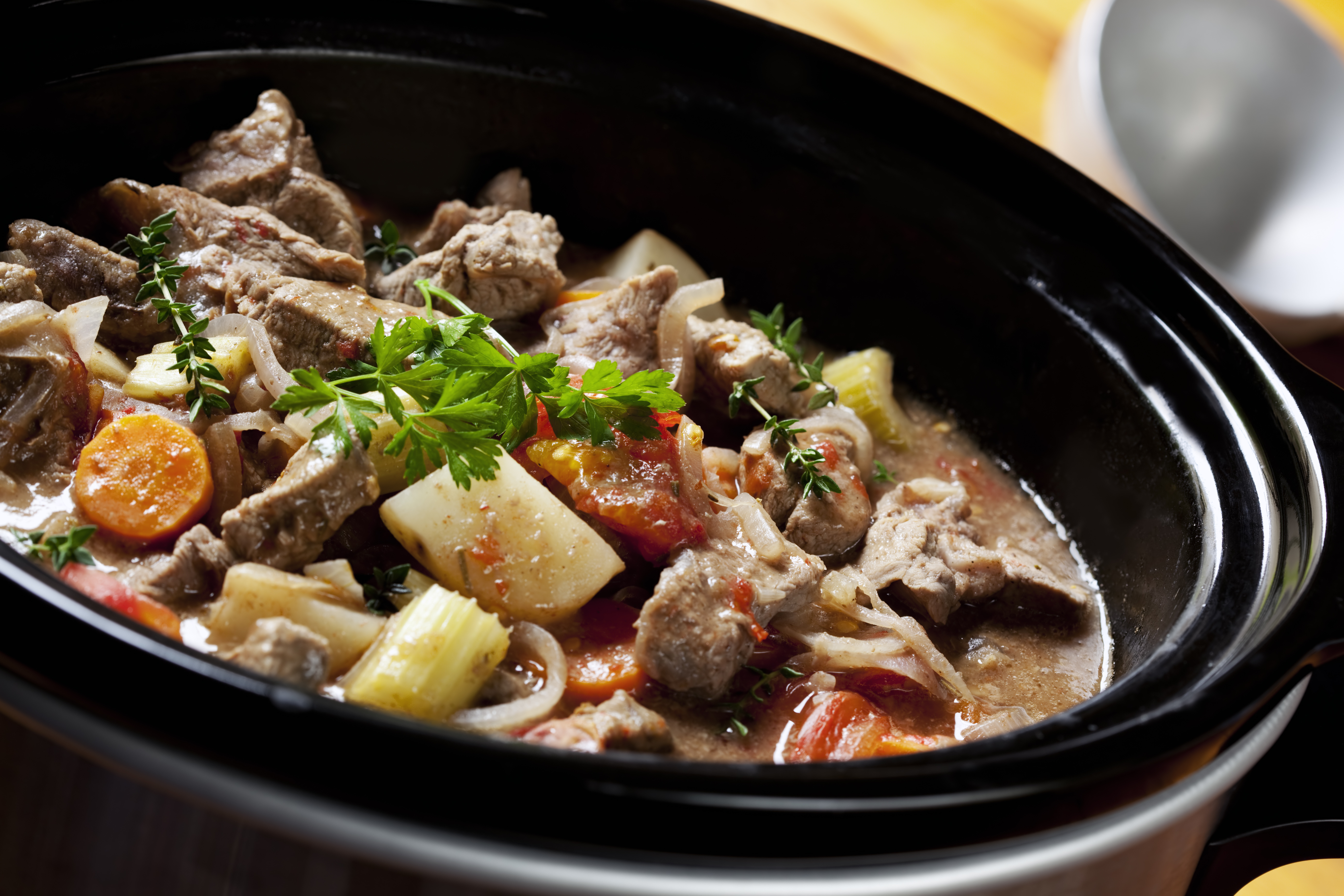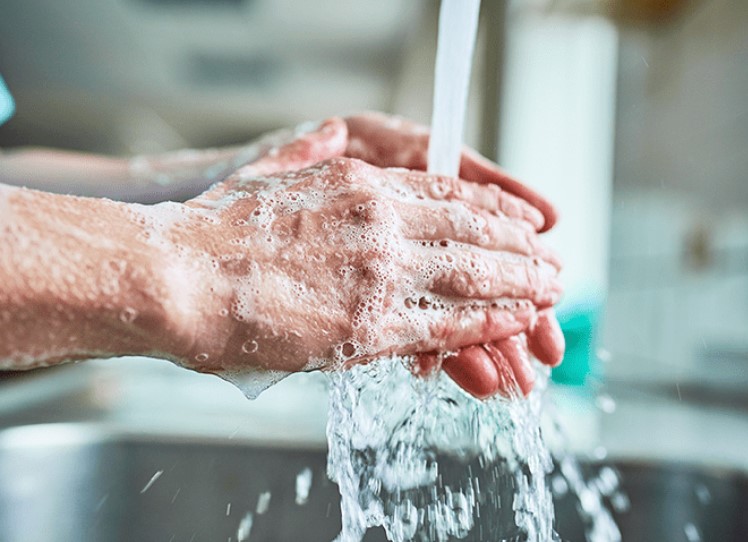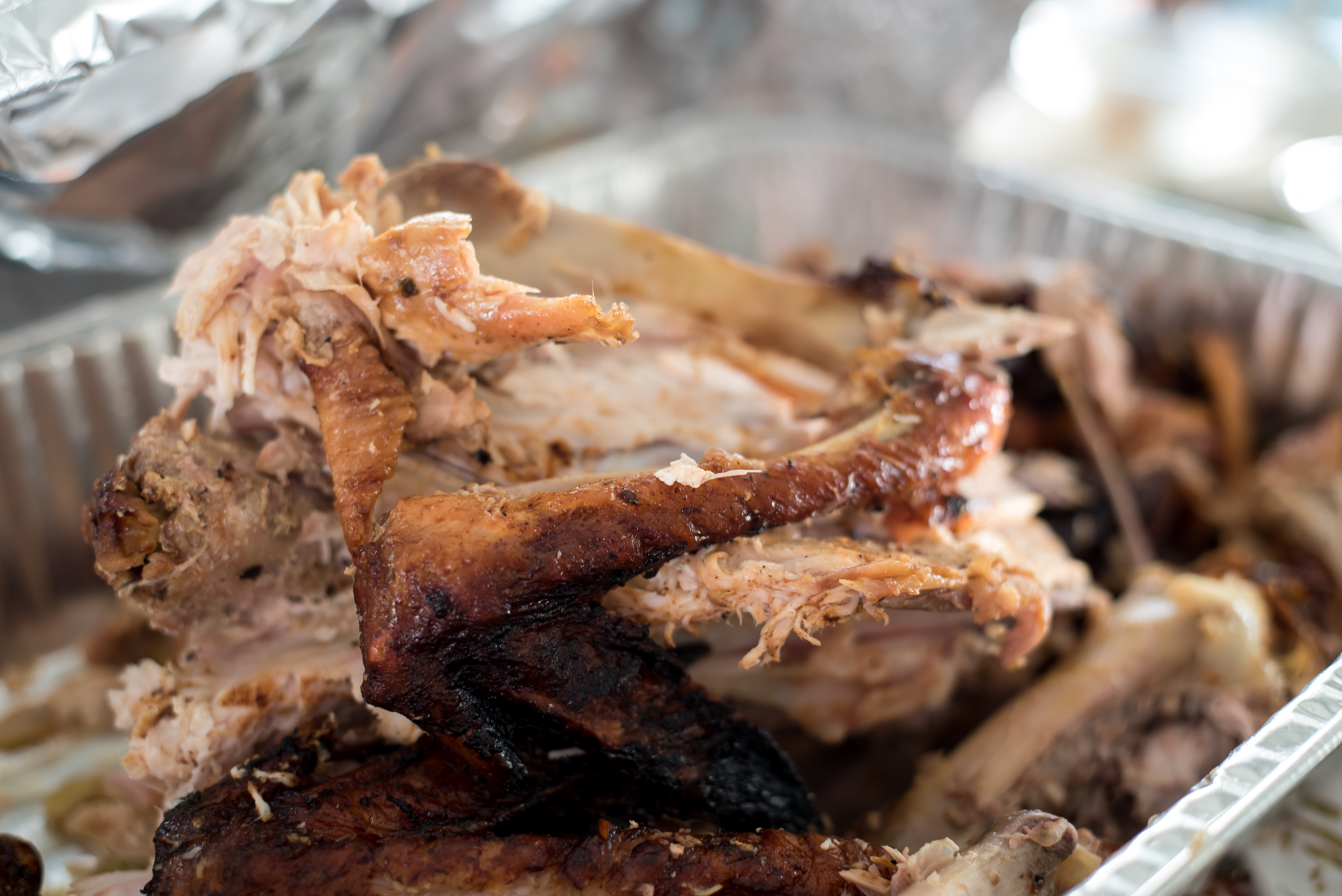
Water in Meat & Poultry
Why is all this water in the meat and poultry packages?
There is so much water in my roast that I can't brown it — it's simmering instead!
Are they injecting water into chickens?
These are some of the questions that consumers have asked about water in packages of fresh meat and poultry. Here is some background information about water in meat and poultry.
Naturally Occurring Moisture Content of Meat and Poultry
Meat and poultry are composed of naturally occurring water, muscle, connective tissue, fat, and bone. People eat meat for the muscle. The muscle is approximately 75% water (although different cuts may have more or less water) and 20% protein, with the remaining 5% representing a combination of fat, carbohydrate, and minerals. The percentage of naturally occurring water in meat varies with the type of muscle, the kind of meat, the season of the year, and the pH of the meat. Fat in meat is found both between muscles and within muscles. In both locations, fat contributes to overall flavor and juiciness in meats.
Water Content of Meat and Poultry
The amount of naturally occurring water, or moisture, present in meat and poultry may surprise consumers (see chart). An eye of round roast is 73% water before cooking. The same roast after roasting contains 65% water. A whole broiler-fryer contains 66% water before cooking and 60% afterwards. Leaner meat and poultry contain more protein and less fat. Since water is a component of protein (but not fat), a leaner cut will contain slightly more water on a per weight basis.[1]
| Product Name | Percentage Water Raw | Percentage Water Cooked |
|---|---|---|
| Chicken fryer, whole | 66% | 60% |
| White meat chicken, with skin | 69% | 61% |
| Dark meat chicken, with skin | 66% | 59% |
| Ground beef, 85% lean | 64% | 60% |
| Ground beef, 73% lean | 56% | 55% |
| Beef, eye of round | 73% | 65% |
| Beef, whole brisket | 71% | 56% |
|
[1] USDA ARS . (n.d.). FoodData Central. https://fdc.nal.usda.gov/ |
||
Leaner Beef Contains More Water
Hotline callers sometimes comment that today's beef contains more water and that it doesn't taste the same as in the past. One reason for this is that today's animals are bred to be leaner. Meat from leaner animals contains more water. The fat in meat contributes to flavor, so a leaner cut with less fat will taste different than a fattier cut. To compensate for less flavor, some of these leaner cuts are prepared with an added flavor solution.
Added Solution Meat and Poultry Products
Many grocery stores offer meat and poultry products that have flavoring solutions added into them. For example, pork chops may be injected with a solution of water, salt, and sodium phosphate (a solution that can add flavor and moisture to leaner meats). These products also provide convenience by saving steps in preparation, such as, "Beef Marinated with 10% Teriyaki Sauce." To prevent confusion, the presence of flavor solutions incorporated into the meat or poultry muscle must be stated on the front of the package as part of the product name.
Solution added meat and poultry products are raw products that contain flavor solutions added through marinating, needle injecting, tumbling, soaking, etc. The presence and amount of the solution will be featured as part of the product name, for example, “Chicken Thighs Flavored with up to 10% of a Solution of water, salt, and spices” or “Beef Steak with 6% Marinade.” The product name is also required to include the individual ingredients of the flavor solution, or it may identify the name of a multi-ingredient component in place of listing all the solution ingredients, for example, marinade or sauce. The product name is required to appear on the principal display panel, which is the panel on the front of the package at display. However, when a multi-ingredient solution component is used in the product name instead of listing each ingredient, the solution ingredients would be listed in the ingredients statement which typically appears on the information panel, which is usually on the back of the package, but may appear on the sides.
In the case of added solution products, the solutions that are added into the meat or poultry for flavoring, seasoning, and tenderizing, are intended to be part of the product. Added solutions are required by regulations to be identified as part of the product name, and whether the solution is still incorporated into the product or is free-flowing within the package, it is considered part of the product and, as such, is included in the net weight declared on the label.
Natural Products
All raw single ingredient meat and poultry qualify as “natural.” However, certain products labeled as natural may also contain a flavoring solution provided the solution contains ingredients that are minimally processed and not considered artificial; e.g., natural flavoring. The amount of solution added to products bearing natural claims is not limited. All products claiming to be natural should be accompanied by a brief statement which explains what is meant by the term “natural”, for example, “minimally processed, no artificial ingredients.”
Freezing Meat and Poultry
When meat and poultry are frozen, the water that is a natural component of all meats turns to solid ice crystals. The water expands when it freezes. The sharp-edged crystals push into the surrounding tissue, rupturing the cells. The water that is outside the cell membrane freezes first. As it does, it leeches water from inside the cell membranes. When it thaws, the original balance does not return to normal. The thawed product will have lost some of its natural springiness. The water released during freezing seeps out of the thawing meat and poultry into the package.
The faster meat and poultry freezes, the smaller the ice crystals will be. Smaller ice crystals will do less damage. Products that are flash-frozen by the manufacturer will have superior quality to fresh products frozen by the consumer.
Moisture Loss from Meat and Poultry
Meat and poultry are transported from slaughter and processing plants in refrigerated trucks that can be kept as cold as 1 degree F. Although they may not be frozen solid, they are in a semi-frozen or “hard-chilled” state. Any moisture that is in the product is thus held in the tissue of the product.
Beef is often ground while partially frozen. Because ice crystals are in the frozen beef, there may appear to be more liquid in it.
At the grocery store, the products are displayed in refrigerator cases as cold as 26 degrees F. At this temperature, the cells of the product will “loosen up” somewhat and some of the moisture will gradually seep out. The production of this visible meat or poultry juice is known in the industry as weep or purge. It occurs during display of retail cuts, during shipment of wholesale cuts, and during storage of cuts prior to shipment.
In a home refrigerator set at 40 degrees F or below, even more liquid will seep out of the product. The longer a product sits in the refrigerator, the more liquid will be released from the muscle cells.
Packaging of Meat and Poultry
Some meat and poultry products are vacuum-packed to prolong the storage times. Products are packaged in air- and leak-proof packages under vacuum, and, in some cases, a specific gas will be pumped into the package to preserve flavor and quality. While the package sits in the refrigerator case, the vacuum is still in effect, extracting the juices out of the meat. Because these packages are airtight and leak proof, the juices accumulate in the package. In contrast, the plastic wrapped packaging, typically used by most supermarkets, allows a certain amount of evaporation.
FSIS Regulations and Policies Relative to Retained Water
Meat and poultry naturally contain moisture and may also contain moisture retained from post-evisceration processing. During processing, recently slaughtered animal carcasses and their organ meats (hearts, livers, kidneys, etc.) are chilled to cool them down to a safe temperature. The absorption of water used for post-evisceration processing is called “retained water” or “absorbed water.” If the carcasses or parts have absorbed such water, the amount of water by percentage along with the terms “retained water” or “absorbed water,” (e.g., “up to X% retained water,” or “may contain up to X% retained water” or “with X% absorbed water”) must be stated on the label.
Consumers can compare product labels for the presence of retained (or absorbed) water to assure that products compare equally.
Establishments may include a “no-retained-water” statement on the label when the product has not been exposed to a post-evisceration process that adds water, or the establishment has data or information that establishes that the post-evisceration processing used does not add water to the product.
Retained Water in Single-Ingredient Raw Poultry Products
Single ingredient poultry is not injected with water, but some water is absorbed during cooling in a “chill-tank,” a large vat of cold, moving water. The chill-tank lowers the temperature of the slaughtered birds and their giblets (hearts, livers, gizzards, etc). During this water chilling process, turkeys and chickens will absorb some of the water, and this amount must be prominently declared on the label. It is not unusual for poultry to declare 8 to 12% retained water on the label.
Retained Water in Single-Ingredient Raw Meat Products
Beef is rinsed during slaughter, but the small amount of water used is usually absorbed on the surface of the meat, not bound to the protein or inside the tissue, and quickly evaporates or drips out. Meat processors will periodically shower red meat carcasses to minimize moisture loss or “shrink” that occurs in the cooler prior to processing. Single ingredient beef carcasses and their parts cooled with water during post-evisceration processing must be appropriately labeled with the retained water statement.
Cooking Meat and Poultry
In general, the higher the cooking temperature, the more moisture will be lost in cooking. It is not unusual for a beef roast to lose 1/3 of its original size and weight when cooked at a high temperature or cooked too long.



